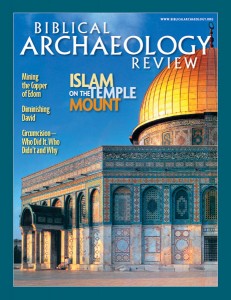
Judea at the time of Herod, Jesus and the Jewish defenders of Masada made use of a pottery corpus different from its neighbors and different from what went before or after. That is the conclusion of Rachel Bar-Nathan, author of Volume VII of the final report of the excavations carried out at Masada between 1963 and 1965 under the direction of Israel’s most illustrious archaeologist, Yigael Yadin. Bar-Nathan calls this distinctive ceramic repertoire “Judean Pottery.”
It is now more than 40 years since the excavation ended. Joseph Aviram, Yadin’s colleague and close friend who continues to lead the Israel Exploration Society with such distinction, tells me that this volume has been 20 years in the making. It follows six other heavy folio volumes covering ostraca (inscribed potsherds), Greek and Latin documents, coins, architecture, mosaics and wall paintings, among other subjects. Two more volumes are planned, covering textiles, weapons, stone vessels and botanical remains. All in all, a fitting tribute to a great archaeologist who died unexpectedly from a heart attack in 1984 at age 67.
Overlooking the Dead Sea in the Judean desert, Masada is a diamond-shaped mesa where Herod the Great built a palace/fortress. Contemporaneous Herodian sites in the area indicate that Hasmonean occupation of the site must have preceded the Herodian occupation, but Yadin did not find it. In 1995–1997 Ehud Netzer and Guy Stiebel returned for short seasons to look for the Hasmonean levels, but they, too, were unsuccessful. “The history of Masada during the Hasmonean period (c. 100–37 B.C.E.),” Bar-Nathan tells us, “remains an open question.”
Already a library member? Log in here.
Institution user? Log in with your IP address.

